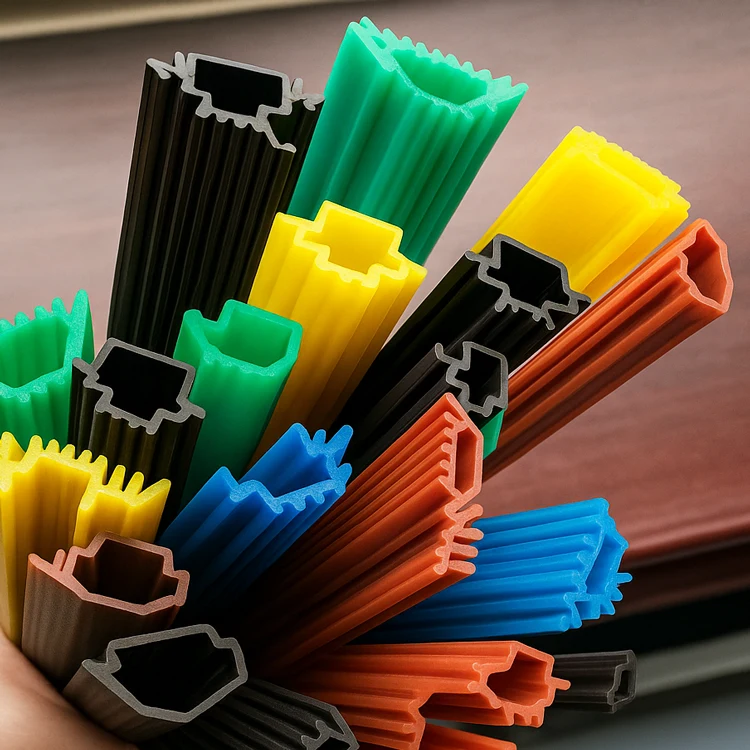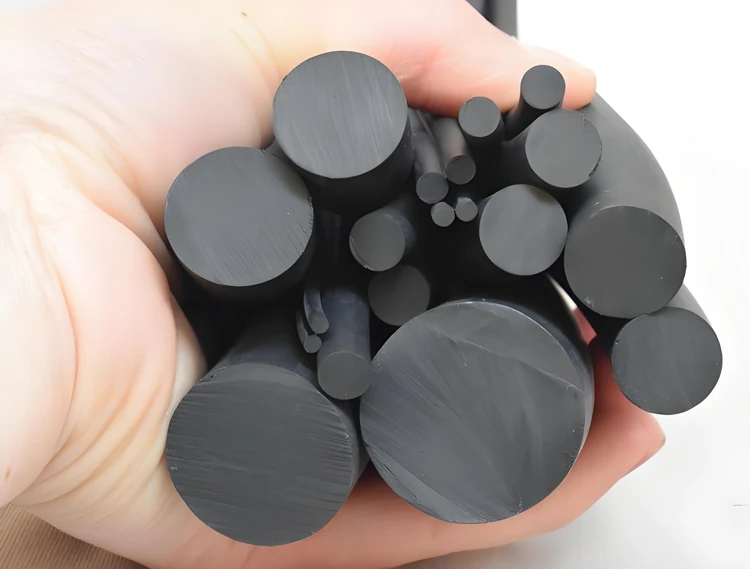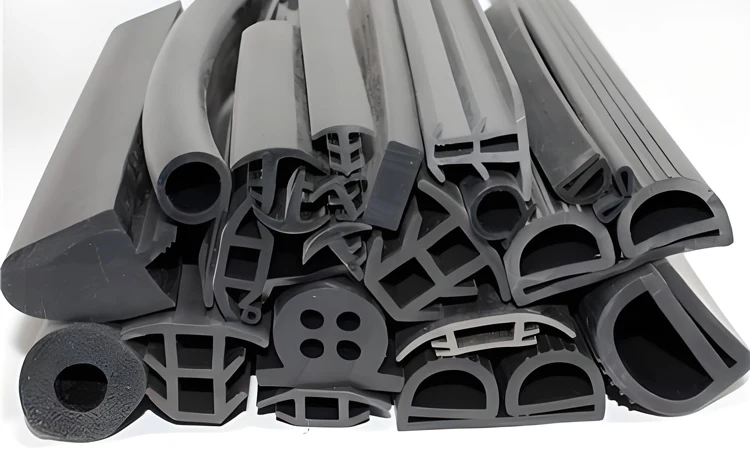I. Introduction
Rubber is everywhere—from the tires on our cars to the seals in our refrigerators. But have you ever wondered how these flexible, resilient parts are actually made? One of the most common manufacturing methods for shaping rubber is extrusion molding—a process where raw rubber compounds are forced through a die to create continuous profiles like tubes, strips, and gaskets.
Before I entered the rubber manufacturing industry, I assumed all rubber parts were molded in static shapes. But extrusion opened my eyes to a much more versatile process. It allows me to create long, complex cross-sectional shapes with remarkable consistency and speed. That’s why extruded rubber is so widely used in industries like automotive, construction, and electronics.
In this article, I’ll walk you through which rubber materials are best suited for extrusion molding—from traditional natural rubber to high-performance fluorosilicone. Each has its own strengths, challenges, and ideal application scenarios.
Let’s explore the lineup of extrudable rubbers and understand what makes them suitable for this essential process.

II. Natural Rubber (NR)
1. Material Characteristics
When I first worked with natural rubber (NR), I was amazed by its exceptional elasticity and tensile strength. Derived from the latex of the Hevea brasiliensis tree, NR is one of the most traditional yet still highly relevant rubber materials in the industry.
What makes natural rubber stand out is its excellent resistance to water, mild acids, and alkalis, as well as its remarkable ability to return to its original shape after stretching. These properties make it highly valuable for applications where flexibility and durability are key.
However, I’ve also learned that NR is sensitive to ozone, UV radiation, and petroleum-based oils—which means it’s not the best choice for outdoor or chemical-heavy environments unless specially formulated.
2. Extrusion Molding Advantages
Natural rubber performs beautifully in extrusion molding. Its high plasticity and smooth flow behavior make it easy to process through an extruder, especially when forming continuous profiles.
One of the advantages I’ve seen in production is its ability to maintain dimensional stability even in high-speed extrusion lines. The material blends well with additives and cures uniformly during vulcanization.
You can easily extrude NR into seals, gaskets, vibration dampers, and tubing—especially for indoor or low-chemical exposure environments.
“Natural rubber’s flexibility in both material and processing makes it a staple in extrusion operations for general-purpose applications.”
3. Application Areas
From my experience, extruded natural rubber is commonly used in:
- Automotive: such as pedal seals, engine bay buffers, and cable sleeves.
- Aerospace and Aviation: for vibration insulation in cabin structures.
- Conveyor Belt Manufacturing: for edge trims and skirt boards.
- General Industrial Equipment: for protective seals and anti-slip components.
While newer synthetic rubbers have entered the market, I’ve found that NR remains unmatched when cost-effective elasticity and softness are required in extrusion.
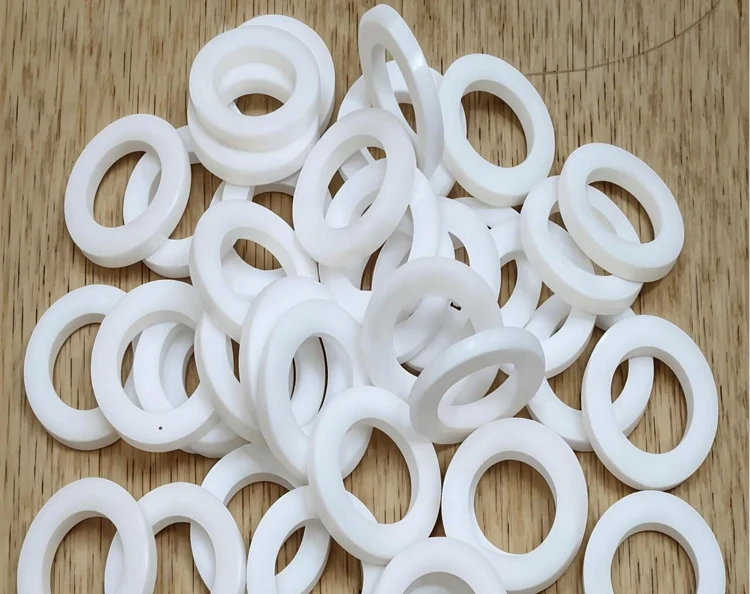
III. Styrene-Butadiene Rubber (SBR)
1. Material Characteristics
When I need a cost-effective rubber with good wear resistance and aging stability, I often turn to Styrene-Butadiene Rubber (SBR). It’s one of the most widely used synthetic rubbers, developed as an alternative to natural rubber during World War II. Today, it continues to serve industries that demand volume production without sacrificing mechanical strength.
SBR offers excellent abrasion resistance, thermal aging properties, and chemical stability, particularly against water and mild chemicals. Though it lacks the natural elasticity of NR, it compensates with greater stability under mechanical stress and temperature changes.
However, from my own experience, SBR doesn’t perform well in environments with heavy oil exposure or extreme heat unless specially compounded.
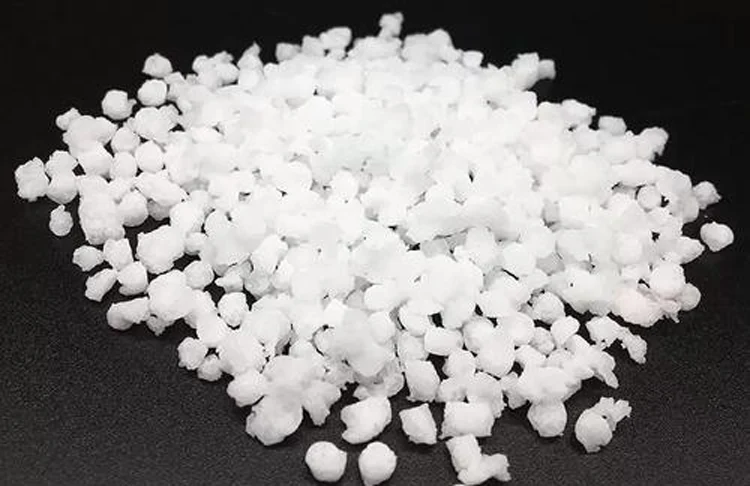
2. Extrusion Molding Advantages
One reason I favor SBR in extrusion is its consistent processing behavior. It extrudes smoothly into complex profiles and handles well during continuous production. Its thermal and mechanical stability allows us to maintain shape and tolerances even under demanding production speeds.
The surface finish of SBR extrusions is often very clean and uniform, making it ideal for visible or precision-profile applications.
Thanks to its structural integrity, SBR is especially suited for gaskets, hoses, protective covers, and bumpers where durability outweighs the need for extreme flexibility.
“For applications that need toughness over softness, SBR gives me an ideal balance between performance and price.”
3. Application Areas
SBR extrusion products are frequently used in:
- Automotive parts: like door seals, floor mats, brake components.
- Industrial hoses: for air and water conveyance.
- Conveyor systems: as covers, scrapers, or guide rails.
- Footwear and flooring: for anti-slip and impact absorption surfaces.
In my projects, I’ve found SBR to be the go-to material when customers want durability and affordability in one extrusion-friendly compound.
IV. Neoprene Rubber (CR)
1. Material Characteristics
Neoprene, also known as chloroprene rubber (CR), is one of my favorite all-around performers. It strikes a rare balance of mechanical strength, chemical resistance, and environmental durability. Whether it’s oil, ozone, UV rays, or moderate heat—Neoprene can take it.
One of the key things I appreciate about Neoprene is its natural flame retardancy and excellent weather resistance. It also resists degradation from refrigerants, many chemicals, and even weak acids and bases. This makes it suitable for both indoor and outdoor use, especially in fluctuating temperature zones.
Though it doesn’t offer the same softness or elasticity as natural rubber, Neoprene’s stability under stress and environmental exposure makes it a highly dependable material.
2. Extrusion Molding Advantages
In extrusion, Neoprene offers superb shape retention and flexibility, especially for profiles exposed to the outdoors. Its balanced flow characteristics ensure smooth passage through the die, while its post-curing hardness helps it hold precise shapes without collapsing.
I’ve used Neoprene to produce long extrusion profiles that need to resist UV exposure, weathering, and moderate oil contact—often with minimal material degradation over years of use.
Common Neoprene extrusions include weatherstrips, HVAC gaskets, cable sleeves, and protective tubing.
“Neoprene is like the Swiss Army knife of rubbers—adaptable, weather-tough, and perfect for extrusion when versatility is key.”
3. Application Areas
Neoprene is widely used across:
- Automotive: for spark plug boots, engine bay grommets, and fuel line sleeves.
- Construction: for window and door seals, expansion joint fillers.
- Industrial equipment: in belts, hoses, and anti-vibration pads.
- Marine and outdoor gear: such as waterproof seals, buoyant strips, and thermal insulators.
If you’re looking for a resilient, multi-purpose rubber that won’t crack under the sun or dissolve in oil, Neoprene deserves a top spot in your extrusion lineup.
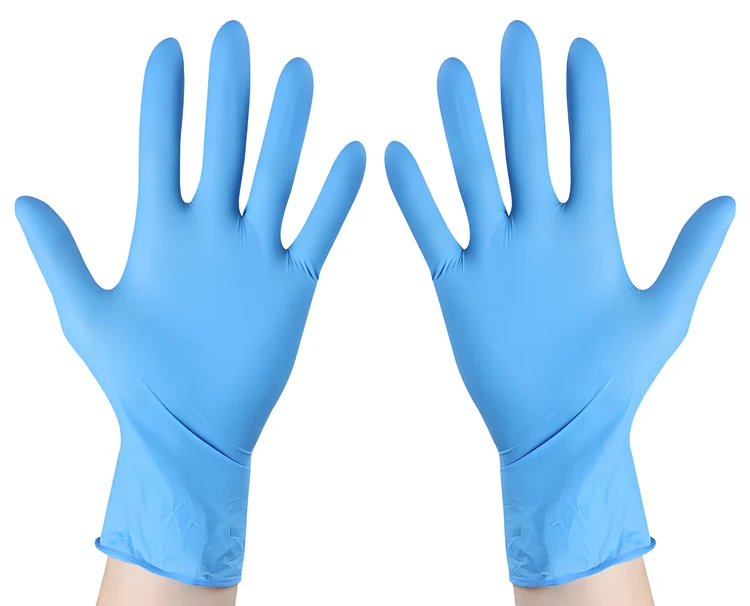
V. Nitrile Rubber (NBR)
1. Material Characteristics
When it comes to applications that demand oil and fuel resistance, I always consider Nitrile Rubber (NBR) first. This synthetic rubber is a copolymer of acrylonitrile and butadiene, and its standout feature is its exceptional resistance to petroleum-based oils, fuels, and many chemicals.
The acrylonitrile content can be adjusted to fine-tune the performance. Higher acrylonitrile levels improve oil resistance, while lower levels enhance flexibility and cold resistance. From what I’ve seen in industrial applications, this adaptability is a big advantage.
NBR also offers good abrasion resistance, decent heat resistance, and moderate aging performance—although it’s not the best under ozone or weathering exposure without additives.
2. Extrusion Molding Advantages
NBR is one of the most widely extruded rubbers for industrial use. Its stable extrusion behavior makes it suitable for high-precision applications like fuel line seals and oil-resistant tubing.
During extrusion, I’ve found that NBR maintains consistent density and dimensional control, allowing for the production of tight-tolerance components that are mission-critical in systems exposed to oil or chemicals.
It’s particularly effective when used in O-rings, tubing, and grommets for engine environments or oil-handling systems.
“If oil contact is involved, I don’t take chances—NBR is my go-to material for extrusion.”
3. Application Areas
Here are the typical areas where I’ve used extruded NBR parts:
- Automotive industry: fuel system O-rings, engine seals, and under-hood gaskets.
- Chemical and petrochemical processing: for fluid transfer hoses and valve seals.
- Oil and gas equipment: including fuel dispensing lines and pipe sleeves.
- General machinery: for hydraulic seals, wear pads, and anti-leak profiles.
NBR is indispensable in any extrusion project where chemical compatibility and oil resistance are non-negotiable.
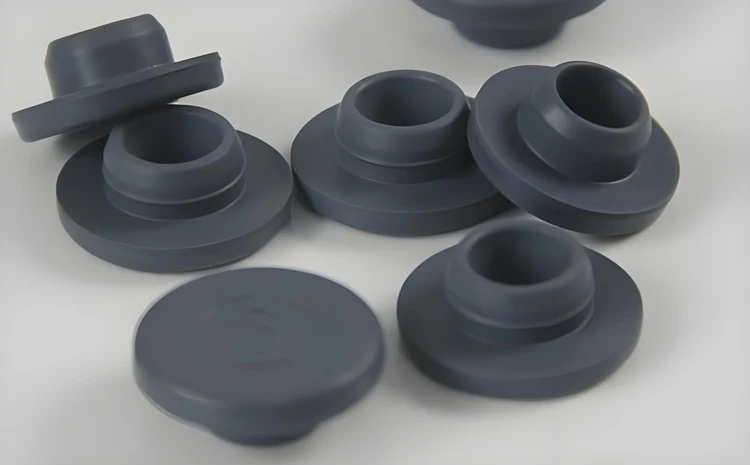
VI. Butyl Rubber (IIR)
1. Material Characteristics
Among all the rubber materials I’ve worked with, Butyl Rubber (IIR) stands out for one critical feature: gas impermeability. It has the lowest gas and moisture permeability of any commonly used elastomer, thanks to its tightly packed molecular structure. This makes it an excellent choice for applications that demand airtightness.
Butyl also offers strong resistance to heat, ozone, weathering, and aging—especially in static sealing applications. It handles moderate chemical exposure well and provides shock absorption and electrical insulation properties.
However, it doesn’t perform well with petroleum-based oils or solvents. But when it comes to sealing air or retaining pressure, it’s one of the best choices I have on hand.
2. Extrusion Molding Advantages
From an extrusion perspective, Butyl Rubber has a smooth flow profile and creates dense, uniform products. The key benefit is its ability to produce seals and hoses that retain pressure and prevent air or vapor leakage over time.
In production, I’ve used Butyl Rubber successfully for fuel system seals, air springs, and noise-dampening components. It performs well in both solid and sponge forms during extrusion, making it a versatile material for specialized applications.
“If your extrusion project requires airtightness, Butyl Rubber is the one you want in your lineup.”
3. Application Areas
I typically apply Butyl Rubber in the following fields:
- Automotive: for inner tubes, air spring bellows, and vacuum hoses.
- Aerospace: where pressure retention and insulation are critical.
- Construction: in vibration-damping seals and sound barriers.
- Fuel systems: such as vapor return lines and filler neck seals.
With its low permeability and environmental durability, Butyl Rubber is essential for extrusion projects that rely on long-term sealing and containment performance.
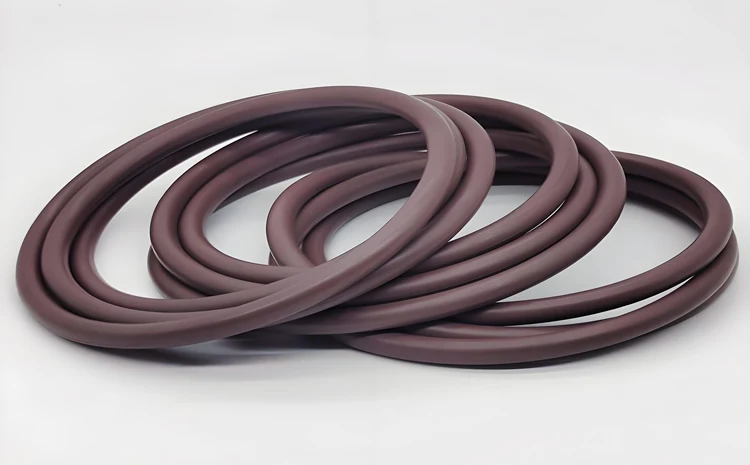
VII. Fluoroelastomer (FKM)
1. Material Characteristics
When I encounter extreme environments—whether it’s high heat, corrosive chemicals, or aggressive fuels—fluoroelastomer (FKM) is my first choice. Best known under brand names like Viton®, FKM is engineered for maximum resistance to chemicals, oils, and elevated temperatures.
What makes FKM unique is its ability to withstand continuous service temperatures up to 200°C (392°F) and even short-term exposure beyond that. It also resists acids, fuels, solvents, ozone, and weathering, all while maintaining elasticity and mechanical integrity.
It’s not a low-cost material, but in critical applications where failure is not an option, I find the investment in FKM pays off in longevity and performance.
2. Extrusion Molding Advantages
Despite being dense and relatively stiff compared to other rubbers, FKM can still be precisely extruded into complex profiles with tight tolerances. I often rely on it for parts that must hold up in harsh chemical environments or extreme engine compartments.
Its thermal stability during the extrusion and vulcanization process is excellent, and its final cured properties offer a premium seal and long-term durability, even when exposed to aggressive fluids or constant compression.
Examples of FKM extruded parts include chemical transfer tubing, fuel vapor seals, and high-temp gaskets.
“When customers ask me for a rubber that ‘can survive anything,’ my answer is simple—FKM.”
3. Application Areas
I typically recommend extruded FKM components for:
- Aerospace: fuel system hoses, firewall gaskets, and engine seals.
- Oil & Gas: high-pressure chemical transfer and containment systems.
- Automotive: turbocharger seals, fuel line gaskets, and under-hood tubing.
- Chemical processing: resistant linings, valve seals, and aggressive media tubing.
With its top-tier resistance to heat, oil, and chemicals, FKM is ideal for mission-critical extrusion parts in the harshest working environments.
![]()
VIII. Silicone Rubber
1. Material Characteristics
Silicone rubber is one of the most versatile materials I work with—especially when thermal stability, flexibility, and safety compliance are key. It can operate in a wide temperature range from -60°C to +230°C, and certain grades even go beyond that. What impresses me most is how silicone retains its softness, elasticity, and resilience across this full range.
It also boasts excellent UV resistance, ozone resistance, and electrical insulation, making it ideal for both indoor and outdoor use. And because it’s odorless, tasteless, and biocompatible, it’s often used in medical devices, baby products, and food-grade applications.
Unlike some other elastomers, silicone is inert and hypoallergenic, which is why it’s also the go-to choice in healthcare and cleanroom environments.
2. Extrusion Molding Advantages
Silicone extrudes beautifully. It flows smoothly and adapts well to a wide variety of cross-sectional designs—from ultra-thin tubing to intricate window seals. Thanks to its post-cure stability and compression set resistance, it consistently produces high-precision profiles with excellent surface finish.
I’ve used silicone extrusion for everything from medical tubing and peristaltic pump lines to oven seals and electrical gaskets. It can also be easily pigmented, co-extruded with mesh, or reinforced for added strength.
“Silicone’s flexibility in both temperature and design makes it the most ‘designer-friendly’ material I’ve ever worked with in extrusion.”
3. Application Areas
Extruded silicone rubber is widely used in:
- Medical and healthcare: feeding tubes, respirator seals, and wound care strips.
- Food processing: FDA-grade tubing, oven door gaskets, and beverage dispensers.
- Automotive: under-hood seals, wire harness protection, and turbo intake connectors.
- Electronics: insulating sleeves, LED strip covers, and EMI shielding gaskets.
In my experience, silicone is the ideal extrusion material when safety, performance, and aesthetic finish all matter—especially in regulated or sensitive industries.
IX. EPDM Rubber (Ethylene Propylene Diene Monomer)
1. Material Characteristics
If you ask me which rubber I rely on most for outdoor sealing applications, my answer is always EPDM. This synthetic rubber has a unique molecular structure that gives it excellent resistance to ozone, UV radiation, weathering, and aging—far superior to many other elastomers.
EPDM also resists water, steam, and a variety of chemicals, while maintaining stable mechanical properties across a broad temperature range (-40°C to +120°C). It doesn’t crack, shrink, or lose elasticity easily, even when exposed to harsh climates for years.
Another advantage is its non-conductive nature, making it ideal for electrical insulation and energy-efficient sealing systems.
2. Extrusion Molding Advantages
In extrusion, EPDM is a workhorse. Its balanced elasticity and curing behavior make it perfect for producing soft or firm profiles depending on formulation. It offers excellent shape retention, flexibility, and long service life, especially in weather-exposed environments.
I’ve found EPDM particularly easy to process into complex or hollow profiles—like bulb seals, edge trims, tubing, and weatherstrips. The surface finish is typically smooth and consistent, and the material bonds well with metals and plastics if adhesives or co-extrusion is needed.
“For any outdoor or long-lasting seal, EPDM delivers durability without compromising on extrusion efficiency.”
3. Application Areas
Here’s where I typically apply extruded EPDM:
- Automotive: door seals, trunk gaskets, windshield weatherstrips.
- Construction: window glazing profiles, curtain wall seals, roofing expansion joints.
- Electrical: cable jackets, solar panel gaskets, electrical enclosure seals.
- HVAC and plumbing: pipe insulation covers, drain tube sleeves, air handling seals.
EPDM is the undisputed champion of weather-resistant rubber materials for extrusion—combining resilience, economy, and processing ease like no other.
X. Conclusion
After working with a wide variety of rubber materials in extrusion projects over the years, one thing has become crystal clear to me: material selection defines performance.
Each rubber type brings its own strengths to the extrusion process:
- Natural rubber (NR): great elasticity and flexibility for general-purpose seals.
- Styrene-butadiene rubber (SBR): cost-effective and tough for high-wear applications.
- Neoprene (CR): weather- and oil-resistant for outdoor and industrial use.
- Nitrile rubber (NBR): unbeatable in fuel- and oil-exposed environments.
- Butyl rubber (IIR): ideal when airtightness and low permeability are key.
- Fluoroelastomer (FKM): extreme durability in the harshest chemical and heat conditions.
- Silicone rubber: temperature and biocompatibility leader in medical, food, and electronics.
- EPDM: the all-weather sealing king in automotive and construction fields.
Choosing the right rubber for extrusion isn’t just a technical decision—it’s a strategic one. The wrong choice can mean premature failure, while the right one leads to cost savings, longer life cycles, and better customer satisfaction.
As extrusion technology continues to evolve—with advancements like multi-material co-extrusion, tighter tolerances, and faster line speeds—the importance of matching rubber material to end-use environment will only grow.
“Extrusion is more than shaping rubber—it’s about engineering solutions that last.”
If you’re planning your next extrusion project and unsure which material to choose, I always recommend starting with performance requirements first. Then, match them to the right compound.
References:

